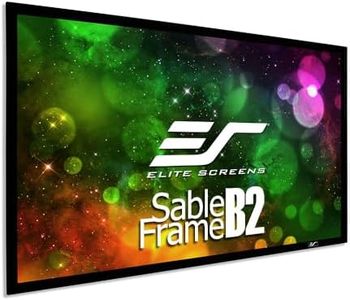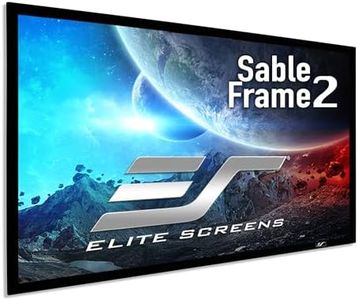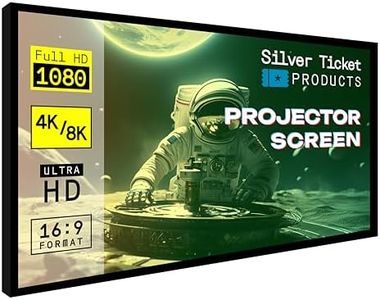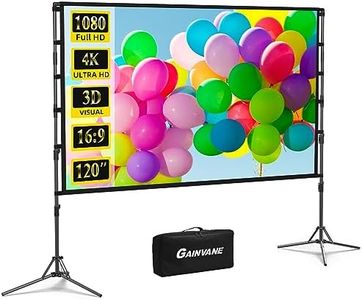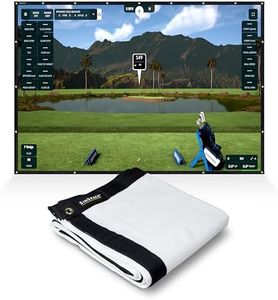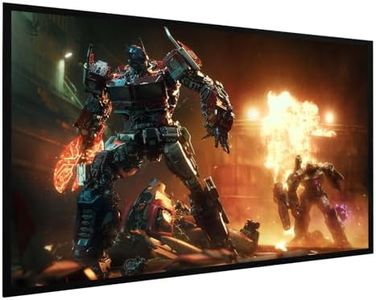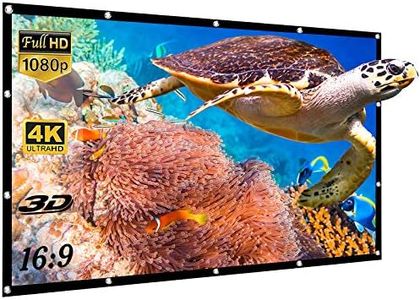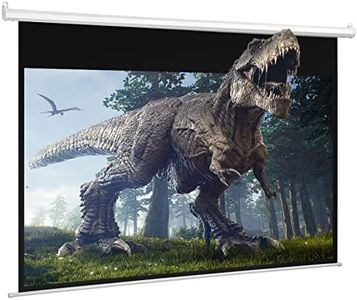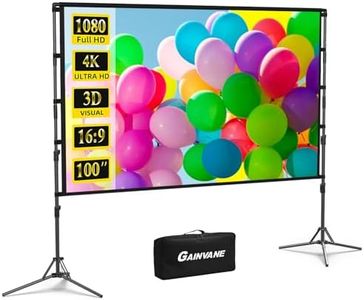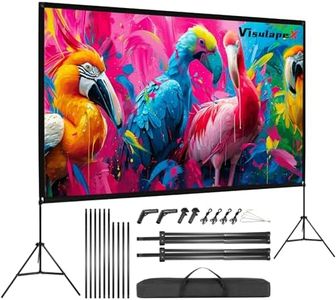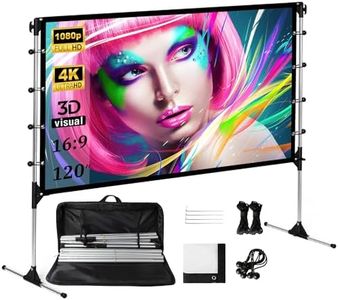We Use CookiesWe use cookies to enhance the security, performance,
functionality and for analytical and promotional activities. By continuing to browse this site you
are agreeing to our privacy policy
10 Best Projector Screens
From leading brands and best sellers available on the web.By clicking on a link to a third party's website, log data is shared with that third party.
Buying Guide for the Best Projector Screens
Choosing the right projector screen can make a big difference in your viewing experience, whether it's for home theater, business presentations, or classroom use. The goal is to pair the screen with your projector and room conditions so that images appear bright, clear, and immersive. Focus on your room's size, lighting conditions, and how you'll use the projector to find a screen that matches your needs.Screen SizeScreen size refers to the diagonal measurement of the visible area of the screen, usually given in inches. It's important because a screen that's too small or too large for your room or projector distance can make viewing uncomfortable or reduce image quality. Screen sizes typically range from compact (under 80 inches) for small rooms or portable use, to large (120 inches and above) for home theaters and big spaces. When picking a size, consider your room dimensions, how far viewers will sit from the screen, and what feels immersive but not overwhelming—roughly, people should sit between 1.5 to 2.5 times the screen’s width away.
Aspect RatioAspect ratio describes the shape of the screen in terms of width to height, such as 4:3 (square-ish), 16:9 (widescreen), or 16:10 (a bit taller widescreen). The right aspect ratio ensures that the image fills most of the screen without black bars. For home theaters and movies, 16:9 is standard as it matches most content. For business or education where you may show older slides or documents, 4:3 or 16:10 might be better. Choose based on the type of content you’ll show most often.
Screen GainScreen gain measures how reflective the screen surface is, defined in comparison to a standard reference material. A gain of 1.0 means typical brightness, less than 1.0 is less bright (dimmer but wider viewing angles), and above 1.0 is brighter (focused light but narrower viewing angles). High-gain screens (1.3 or higher) brighten the image in rooms with ambient light but can limit viewing angles. Low-gain screens are better for dark rooms and wide seating arrangements. Pick gain by thinking about your room’s lighting and where your audience will sit.
Screen MaterialScreen material affects everything from image sharpness to viewing angle and color accuracy. The most common are matte white, glass bead, or grey screens. Matte white works well in most darkened rooms and gives natural colors and wide viewing. Grey screens boost contrast in rooms with some ambient light. Specialty materials exist for 3D or rear projection. Choose a material based on your room's lighting, projector brightness, and desired image performance.
Screen Type (Fixed, Manual, Electric, Portable)Screen type describes how the screen is set up and used. Fixed-frame screens are mounted and always ready; they look neat and are great for dedicated spaces. Manual pull-down and electric motorized screens can be hidden when not needed, ideal for multi-use rooms. Portable screens (tripod or foldable) are useful for travel or temporary setups. Choose the type that fits your installation options, storage needs, and how often you’ll move the screen.
Viewing AngleViewing angle tells you how far to the side you can sit from the center of the screen and still get a bright, clear image. Wide viewing angles mean more people can see the picture well from different parts of the room, while narrow viewing angles are okay for setups where everyone sits facing the screen head-on. Think about your seating plan and pick a screen with a wide enough angle if you have a broad audience.
Ambient Light RejectionAmbient light rejection (ALR) is a feature that helps the screen block out stray light from windows or lamps, so the image stays vivid and clear. Not all screens have ALR; it's especially useful if you can't fully darken your room. If you plan to use the projector during the day or in a space with a lot of unavoidable light, an ALR screen will provide a much better image.

